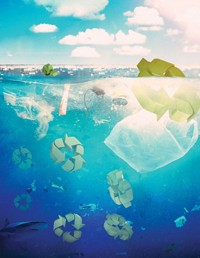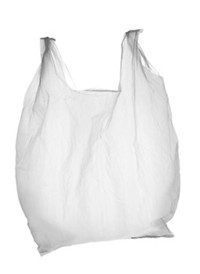Advertisement
Grab your lab coat. Let's get started
Welcome!
Welcome!
Create an account below to get 6 C&EN articles per month, receive newsletters and more - all free.
It seems this is your first time logging in online. Please enter the following information to continue.
As an ACS member you automatically get access to this site. All we need is few more details to create your reading experience.
Not you? Sign in with a different account.
Not you? Sign in with a different account.
ERROR 1
ERROR 1
ERROR 2
ERROR 2
ERROR 2
ERROR 2
ERROR 2
Password and Confirm password must match.
If you have an ACS member number, please enter it here so we can link this account to your membership. (optional)
ERROR 2
ACS values your privacy. By submitting your information, you are gaining access to C&EN and subscribing to our weekly newsletter. We use the information you provide to make your reading experience better, and we will never sell your data to third party members.
Environment
Hippy-Dippy Canvas Affairs?
December 22, 2014
| A version of this story appeared in
Volume 92, Issue 51
I enjoyed the article on plastic bags but was rather surprised by the mildly insulting term “hippy-dippy canvas affairs” describing a reusable cloth bag. Why didn’t the “hippy dippy” get included in the comparison among polyethylene, paper, reusable nonwoven polypropylene, and reusable polyethylene (C&EN, Sept. 15, page 12)?
Canvas or not, almost any cloth bag can be washed if meat juice or other spilled material from groceries gets on it. And such bags can be used for years or even decades because they are so rugged. Your article appears biased toward plastics, and your comparison seems to be a poor use of the scientific method.
Mark A. Benvenuto
Detroit
Fear not, fellow chemists! Phil Rozenski of Hilex Poly has quelled misconceptions about the so-called floating island of trash by referring to the research of Angelicque White. Apparently the garbage island is only a “dilute soup” that is “closer to 1% the size of Texas.” For those of you who have never experienced the magnitude of Texas firsthand, 1% of the square land area of Texas equates to about 105% of the square land area of Delaware, our 49th-largest state, according to most atlases and wikis.
If you are scientifically literate, the word “island” probably makes you think of two dimensions, while “soup” may make you think of the much grander scale of three dimensions. Perhaps you will sleep easier knowing that the valuable and nonrenewable debris “isn’t even visible from the deck of a ship” but instead is polluting below the surface (where the sea animals live). If you are like me, perhaps this information won’t help you sleep any easier.
Nathan DeYonker
Memphis
The cover story on plastic bags covers in excellent detail the political positions behind the controversy.
The most interesting data point is the APCO Insight survey that “found that 92% of shoppers say they reuse their bags.” The original California State University/Joseph Greene report, which is the source of the “Changing Impacts” table, notes that “several reports suggest that single-use plastic bags are often reused again for trash liners. Reusing plastic bags can replace some small trash bags. Reuse of the single-use plastic bags is an important issue but difficult to quantify. It needs to be studied further but is outside the scope of this research.” If 92% of bags are reused, then the table is essentially meaningless. Real consumer behavior shows that bags are not single-use, that they are used two or three times, the last time to contain items destined as garbage.
That is my case. I prefer paper bags because they are the exact size of my kitchen garbage can. I put a plastic bag at the bottom to guard against leakage. If I did not get free bags I would have to buy them. What is really gained by consumers spending 10 cents a bag (store price) or $50 per year at the 500 bag per capita use cited? The resulting purchased bags are only single-use.
On my daily travels it isn’t plastic bags that I see along the road but beverage containers: bottles, cans, and cups. On Melbourne Beach I see beverage containers, bottle caps, food containers, utensils, and only the occasional plastic bag.
Sustainability involves reduce, reuse, and recycle. If reuse is high, then a low recycle number is of little consequence.
There is clearly an intense use of resources in this battle. The push is for a fee on both paper and plastic: Lawyer Jennie Romer “is a fan of this approach. She acknowledges that people need to shop on rainy days or like to use the bags for trash or to pick up after their dogs. ‘It gives consumers more options,’ she says. ‘The main thing is that having a charge makes people stop and think about whether they really need the item or not.’ ”
Say what? Consumers forced to spend $50 per year for what benefit? Indeed, think about it. Taken nationally this is a multi-billion-dollar question.
Gordon L. Nelson
Melbourne, Fla.
ACS 2013 IRS Form 990 Available
The American Chemical Society’s 2013 IRS Form 990 is now available on ACS’s website. To access the information, go to www.acs.org and follow these instructions: Click on “About Us,” and under the heading “About ACS,” click on “ACS Financial Information.” Go to the heading “ACS IRS Form 990,” and click on “2013 IRS Form 990.”
Please see also the related “Guide to Schedule J” for explanatory information regarding ACS Executive Compensation. If you have any access problems, contact webmaster@acs.org.




Join the conversation
Contact the reporter
Submit a Letter to the Editor for publication
Engage with us on Twitter